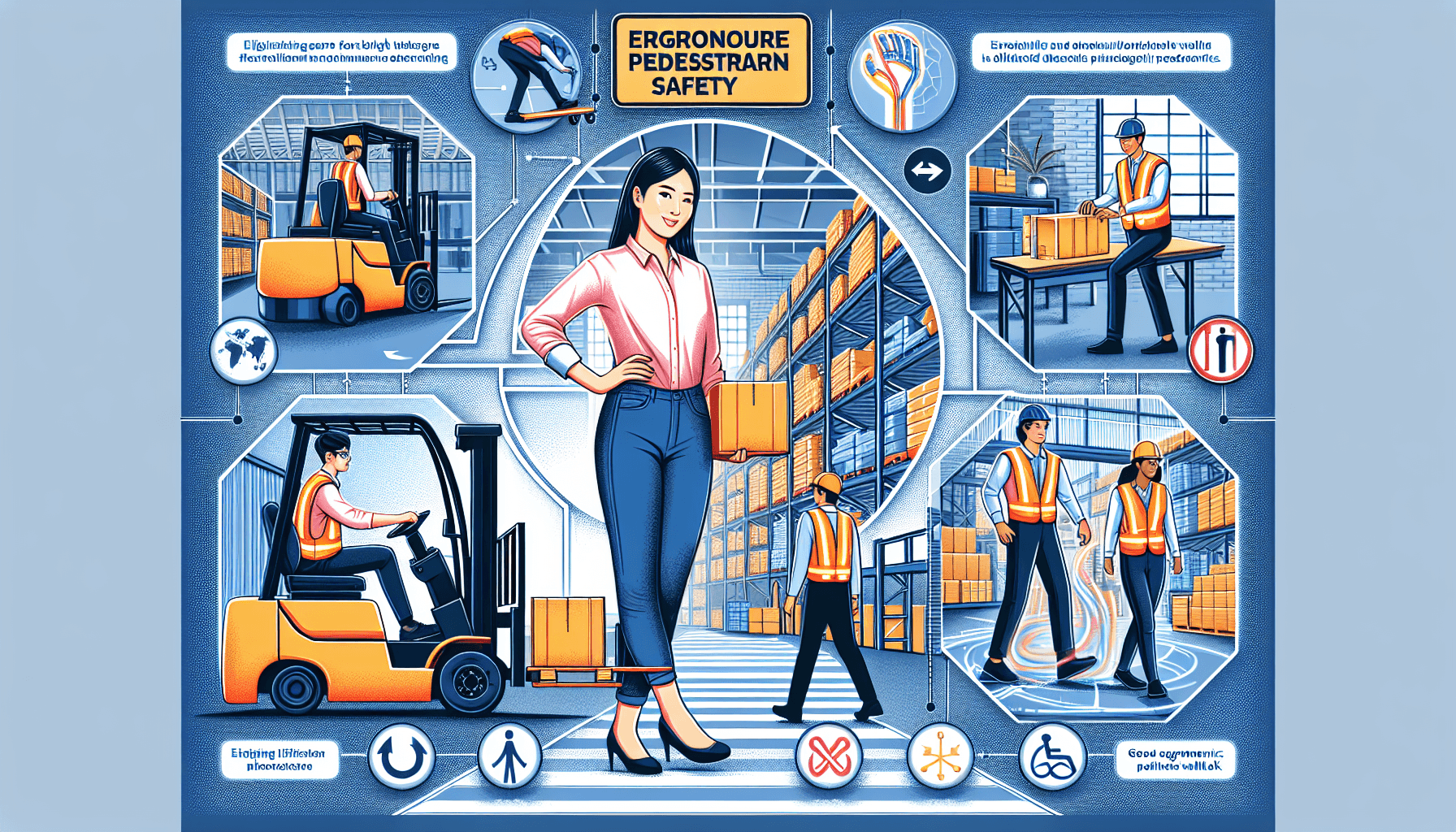The safety of warehouse operations is of utmost importance for the smooth functioning and productivity of any organization. One significant aspect of warehouse safety that often gets overlooked is the well-being of pedestrians working in the warehouse environment. According to a study by HCO Innovations, there are several factors that can significantly impact pedestrian safety in warehouses, and one of the key elements is ergonomics.
The Role of Ergonomics in Warehouse Pedestrian Safety
Ergonomics, also known as human factors engineering, focuses on designing and organizing workspaces to optimize the interaction between humans and their environment. When it comes to warehouse operations, prioritizing ergonomics is crucial for ensuring the safety and well-being of pedestrians working in the facility.
One of the primary goals of ergonomics in a warehouse setting is to reduce the risk of accidents and injuries caused by poor workspace design, inefficient processes, and improper use of equipment. By implementing ergonomic principles, warehouses can create an environment that minimizes physical strain and maximizes efficiency, resulting in increased productivity and reduced employee injuries.
Here are some key areas where ergonomics plays a crucial role in enhancing warehouse pedestrian safety:
- Workstation Design: Ergonomically designing workstations ensures that they are comfortable and suitable for the tasks performed by pedestrians. This includes providing adjustable work surfaces, proper lighting, and appropriate seating options to prevent fatigue and musculoskeletal disorders.
- Manual Material Handling: Manual material handling tasks, such as lifting and carrying heavy objects, can put pedestrians at risk of musculoskeletal injuries. By implementing ergonomic principles, such as providing lifting aids, practicing proper lifting techniques, and organizing inventory to minimize the need for repetitive bending and reaching, the risk of such injuries can be significantly reduced.
- Signage and Labeling: Clear and visible signage and labeling play a crucial role in guiding pedestrians and ensuring they are aware of potential hazards in the warehouse. Ergonomically designed signs and labels should be easily readable, strategically placed, and provide concise information to aid pedestrians in navigating the facility safely.
- Walkways and Traffic Control: Properly designed walkways and traffic control systems are essential for preventing accidents and collisions between pedestrians and moving equipment like forklifts. Ergonomics comes into play by ensuring walkways are wide enough, have clear markings, and are free from obstacles that could impede pedestrian movement.
- Training and Education: Ergonomics also plays a crucial role in the training and education of warehouse personnel. By incorporating ergonomic principles into safety training programs, pedestrians can be educated about proper lifting techniques, safe work practices, and the importance of ergonomics in their daily activities, ultimately reducing the risk of injuries.
While implementing ergonomic measures is essential, it is equally important to leverage technology to enhance pedestrian safety in the warehouse. One such technology is the forklift pedestrian detection system offered by HCO Innovations.
This innovative system utilizes advanced sensors and real-time data analysis to detect the presence of pedestrians near forklifts and alerts the drivers, minimizing the risk of collisions and injuries. By incorporating this system into warehouse operations, organizations can significantly enhance pedestrian safety and prevent accidents in high-risk areas.
In conclusion, ergonomics plays a vital role in improving warehouse pedestrian safety. By focusing on ergonomic design principles, implementing proper training and education, and leveraging technology solutions like the forklift pedestrian detection system, warehouses can create a safer working environment for pedestrians, leading to increased productivity and reduced injuries. Prioritizing ergonomics not only protects the well-being of warehouse pedestrians but also ensures the smooth functioning of warehouse operations.

